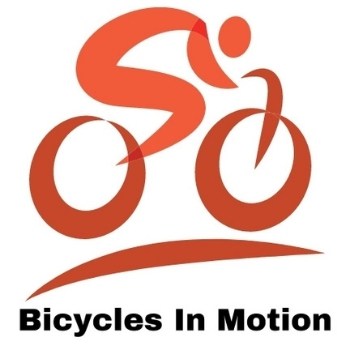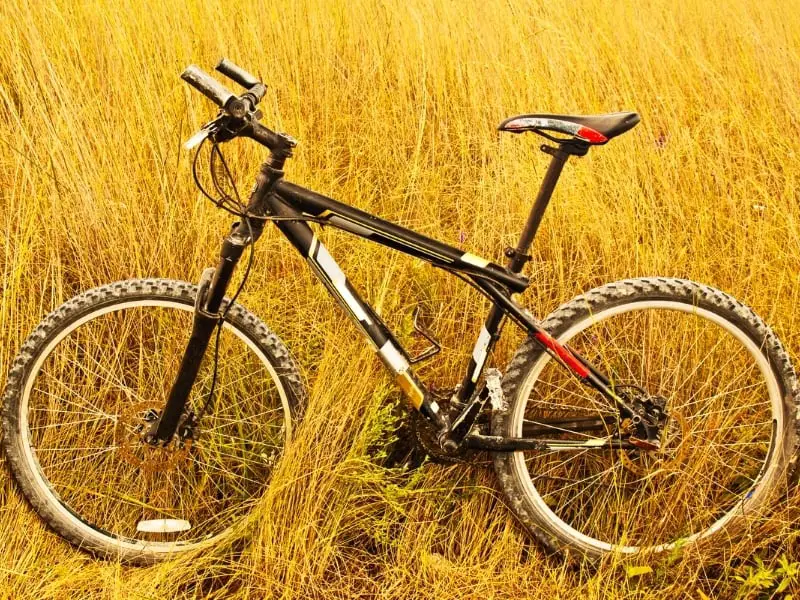Having the wrong size bike can be inefficient, uncomfortable, and cause injuries. So how can you tell if a bike is too small? In most cases you can tell by looking at a bicycle to see that it is too small. There are more precise ways to evaluate the bike’s fit however.
Your height and inseam are common measurements to use to properly size a bike. Other components like the reach, seat post length, and whether your knees hit the handlebars can also indicate a bike that is too small.
How can you tell if a bike is too small? This guide takes you through the things to look for to tell you your bike is too small. Not only can you risk injury with an improperly fitted bike, but it is uncomfortable. Depending on your size and the type of bike you ride, there is an ideal bike size to maximize comfort and control. When it comes to bike sizes, good things are not going to be found in small packages.
Recommended Gear
To see all of my up-to-date recommendations for bikes and cycling gear, check out this resource that I made for you!
Table of Contents
Height, Inseam & Arm Length
Height and inseam measurements are the easiest ways to see if your bike is too small. You should already know your height, but if not stand against a wall and use a tape measure to get the length. For your inseam measurement, stand up straight, with your feet flat and no more than a foot apart.
Measure the distance from the floor along the inside of your leg. You can also use your arm length to evaluate the bike size. This is measured from your collarbone to the center of your palm.
Bikes can come with labels such as S, M, L, or XL but these are deceptive. There is more to a bike size and proper fit than being categorized in this way.
Your height and inseam are important for determining if a bike is too small for you. The differences in height and inseam will also vary for types of bikes too. The charts below can be used as a guide to make sure the bike you have is not too small.
Mountain and Hybrid Bikes
| Individual’s Height | Individual’s Inseam | Frame Size |
| 4’10” – 5’3”/147-160cm | 25” – 27”/62-70cm | 13” – 15” |
| 5’3” – 5’7”/160-170cm | 27” – 29”/68-76cm | 15” – 17” |
| 5’3” – 5’11”/170-180cm | 29” – 31”/73-78cm | 17” – 19” |
| 5’3” – 6’2”/180-188cm | 31” – 33”/78-84cm | 19” – 21” |
| 6’2” – 6’4”/188-194cm | 33” – 35”/8522-90cm | 21” – 23” |
| 6’4” +/194cm+ | 35” +/88cm+ | 23” + |
Road and Racing Bikes
| Individual’s Height | Individual’s Inseam | Frame Size |
| 4’10” – 5’3”/147-160cm | 25” – 27”/62-70cm | 46-50cm |
| 5’3” – 5’7”/160-170cm | 27” – 29”/68-76cm | 52-54cm |
| 5’3” – 5’11”/170-180cm | 29” – 31”/73-78cm | 56-58cm |
| 5’3” – 6’2”/180-188cm | 31” – 33”/78-84cm | 58-60cm |
| 6’2” – 6’4”/188-194cm | 33” – 35”/8522-90cm | 60-62cm |
| 6’4” +/194cm+ | 35” +/88cm+ | 62-64cm |
Standover Height Too Short
The standover height for a bike is the distance from the ground to the top of the top tube. The bicycle standover height is very important and an easy way to determine if the bike is too small for you. You need to be able to stand over the top tube without touching it. Otherwise, if you need to stop quickly, you risk hurting yourself.
The higher the top tube is the shorter the standover height will typically be. Hitting the tube is not something you will get used to. And it is not something that is okay to graze once in a while. Any bumps in the road can cause you to bump the tubing too. Having the right standover height is important for safety and comfort.
The ideal standover height can be calculated using your inseam. If your inseam is 30” for example, you want the standover height to be 29”. Anything smaller than this indicates that your bike is too small for you. Make sure when you measure that both feet are flat on the ground. The general rule is that you want about an inch of clearance over the top tube.
Knees Hitting Handlebars
If you are riding along and your knees are hitting the handlebars, then your bike is too small. The frame should be long enough that your legs have enough room to rotate freely as you cycle.
They should not be hitting the handlebars. In some cases, your knees may not hit the handlebars until you are turning. This is also an indicator that your bike frame is too small.
Reach To The Handlebars
The reach is defined as the horizontal distance from the center of the bottom bracket to the middle of the head tube on the bike. The length of the top tube affects the reach and if the top tube is too short, your reach will be much smaller. This can indicate that your bike is too small for you. A shorter reach will have you hunched over which gets uncomfortable.
The type of bike you have also impacts the desired reach you will want. Some cross-country riders may prefer a longer reach while beginners want to sit more upright.
The reach is the most relevant in contributing to comfort and how much weight is placed on your wrists and hands. You need to find a top tube length and reach that allows you to be stretched out but comfortable.
Ultimately the best reach for you will be a compromise between control, comfort, and efficiently with pedaling. But, if you are sitting hunched over, your bike is too small for you. The correct reach to the handlebars will feel right when:
- You can touch the shifter and brakes comfortably
- Your elbows are slightly bent
- You can bend from the waist to reach down.
Too Many Spacers Under The Stem
Spacers under the steam determine the handlebar height. In general, bikes will have between 20 and 30mm of spacers and these can be moved as needed.
If your reach is uncomfortable then you may have a bike that is too small. And you may be able to adjust this by moving the spacers. Depending on the bike you have, the spacers and handlebar height should be set to provide maximum comfort and control.
Road cyclists generally like lower bar height so they can remain in a flatter position for better aerodynamics. Long-distance riding is more comfortable with an upright position and higher handlebars.
50mm of spacers is a good fit for someone that wants to maintain an upright position. You can easily move spacers to above the stem to change the handlebar height.
Too Much Seatpost Is Showing
When there is a large amount of seatpost showing, it means you have your seat adjusted to a maximum height. Cyclists only do this when they need to give their legs more room for efficient pedaling.
If you have to have the seat that high, chances are that the bike is too small. While it is not a bad thing to have a lot of seatpost showing, it can impact the aerodynamics of the bike.
Many riders will claim that it is okay to have the seat as high as the post will allow. This is true and most bikes do this to accommodate different leg lengths for riders.
However, having the seat post too high is not ideal and can interfere with comfort. It is better to have a bike that is a better fit for you, with the seastpost at a central height.
FAQ
1. How To Tell If Bike Is Too Small For Kid
A bike that is too small for your kid can ruin their biking experience. Using their inseam and height you can find the best fitting bike for them. The measurements below are a good guide for checking if the bike they have is too small.
- For a child’s inseam of 12-17 inches the bike should have 12-inch wheels
- For a child’s inseam of 18-22 inches the bike should have 16-inch wheels
- For a child’s inseam of 22-25 inches the bike should have 20-inch wheels
Most bikes for kids are adjustable to allow for growth spurts. A good fitting bike will allow the child to put their feet flat on the floor while sitting in the saddle. If their legs are bent, then the bike is too small for them.
2. How To Tell If A Mountain Bike Is Too Small
Size is important for mountain biking because you need to maintain control over rough terrain. You also want to be comfortable and not bumping into the frame with every rock and hole you go bounding over.
A bike that is too small will be very uncomfortable and can cause injuries with mountain bikes. When you stand over the bike, with your feet flat on the floor, there should be two or three fingers of space between your groin and the top bar.
If there is more space, your bike is too small. If you are able to have both feet flat on the ground while sitting, then your mountain bike is too small.
3. How To Tell If A Touring Bike Is Too Small
Touring involves spending longer hours on your bike and you sit in a more upright position than with other forms of cycling. Your weight needs to be balanced evenly in order to ride comfortably for a long time.
A touring bike that is too small will cause discomfort. With touring bikes, the important component is the top tube. If the tube is too short, you will not be able to sit upright, and will be in a hunched position. This will be uncomfortable and can cause back and neck pain.
Final Thoughts
Whether you are biking off-road, cruising around the town at a leisurely pace, or training for a race, you want to be comfortable when you ride. A bike that does not fit can be uncomfortable and dangerous, so how can you tell if a bike is too small?
A quick set of measurements can be done to see if the frame fits your height and inseam. This guide also helps you identify a bike that is too small through other helpful components. A small bike can ruin your ride so check your measurements because with bikes, size does matter.


